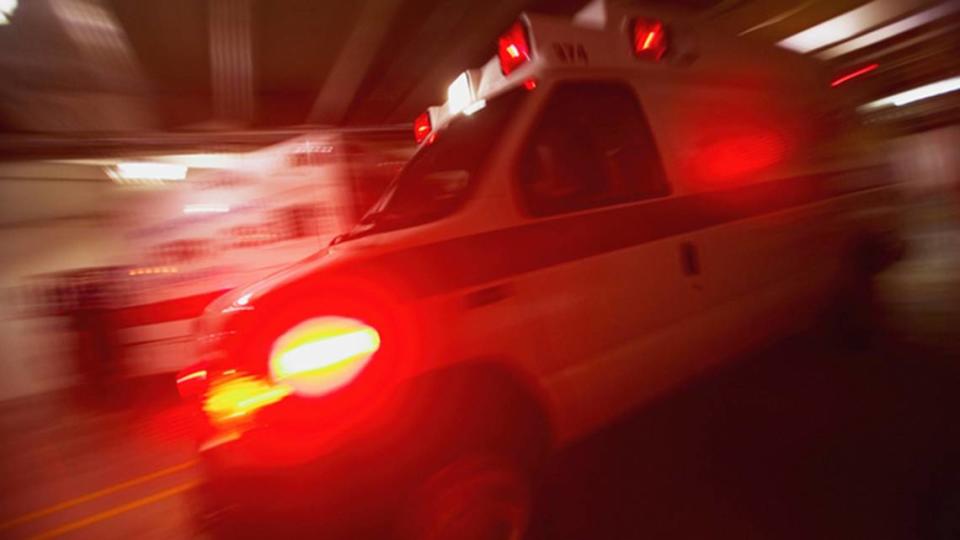My sister refused to call an ambulance, fearing the cost. But Californians needn’t worry | Opinion
Californians may not know about a new state law that went into effect this year that will protect millions of residents against surprise ambulance bills, closing a loophole in federal law.
Patients are hit with surprise ambulance bills more than one might think — even consumers with health insurance. In 2018, 73% of all ground ambulance transports in California resulted in an out-of-network charge among people with large employer insurance. This happens when consumers receive care from an out-of-network provider. The balance bill represents the difference between what the insurance plan pays for that service and what the out-of-network provider charges. Historically, California has had the highest median surprise ambulance bills in the nation at $1,209, according to a 2023 study published by the U.S. Public Interest Research Group.
Opinion
I woke up early one recent morning near Philadelphia to a photo texted from Molly, my sister, who lives near Sacramento. She heard dogs fighting next door and sensed her neighbor’s panic escalating. Following her instinct, she went over to help and saw her neighbor’s two dogs locked in combat. Out of the blue, a third dog attacked her, sinking his teeth into her right arm and clamping down his jaws. This injury resulted in an exposed bone and an open wound the size of an adult palm.
Puncture wounds on her left thigh and back added to the damage. She could have died if it weren’t for her puffy winter jacket, thick sweatshirt and the sudden appearance of my nephew, who pulled the dog off.
Given the severity of the situation, I was surprised when she told me she declined an ambulance service to the emergency room.
Molly has great insurance, graduated from UCLA as an engineer and works for a multinational construction company. So why decline the ride? She said the ER was only four miles away and her other neighbor was standing right there. So she opted for a ride from them, avoiding a potential $1,000 bill.
Seven years ago, at an elementary school carnival, I rescued a child trapped under a large commercial bounce house who had slid down into a crevice and was wedged under the unattended contraption. I directed bystanders to call 911. A few months, later I got a call from the PTA telling me the parents wanted my contact number because they were furious about their ambulance bill.
Now, I better understand their reaction. Americans are rightfully afraid of surprise medical bills. So was Congress. In 2022, the federal No Surprises Act took effect to stop this practice of surprise medical bills. The law covers emergency room services, air ambulance and most out-of-network care, but it had one big loophole: ambulance services.
Across much of the nation, ambulances are notorious for having the highest out-of-network bills, adding up to $129 million a year, according to the U.S. Public Interest Research Group. Among three million privately insured patients who used ambulances every year, half got a bill even after their insurance paid, according to the KFF (formerly known as The Kaiser Family Foundation).
Ambulances are still the Wild West of medical billing, a notoriously fragmented market with a mix of ownership. Private firms including private equity or publicly traded companies provided 40% of ambulance rides; fire departments gave 37%; other government agencies comprised 25% and the rest were provided by hospitals, according to KFF. Today, private equity firms own two of the three largest emergency transport services, which affects billing behavior. Add to this landscape the varying regulations at the state and county levels, and the fact that patients have no choice in which ambulance comes and voila, you have a complex morass where patients can be stuck with a blowout bill.
This year, California joined ten other states in passing its own surprise billing laws for ground ambulances to protect consumers as there is no federal solution in sight. Patients can appeal or negotiate the bill with their health plan, contact the ambulance company and ask for a lower charge. Ultimately, they can report the problem to the state insurance regulator, state attorney general or even sue in small claims court to recover medical expenses, as author Marshall Allen recommends.
It is painful that amid a crisis where my sister was clearly in shock, she thought about the consequences of an ambulance bill. When in an emergency, Californians should focus on taking the fastest transport to higher level care because getting to the hospital a few minutes earlier can matter, and an ambulance ride comes with trained professionals and life-saving equipment.
With this new law, if you have insurance, you are protected from astronomical surprise charges. If you don’t have insurance, the law also protects you from getting an expensive ambulance bill by limiting out-of-pocket costs to the Medi-Cal or Medicare rate — whichever is greater.
There is, however, about 6 million Californians enrolled in federally regulated health plans, usually large multi-state or multinational private companies with self-funded health plans, that will not be protected by this new state law. That’s an issue Congress must take on.
Angela K. Shen, MPH, is a senior fellow at the Leonard Davis Institute of Health Economics at the University of Pennsylvania and a retired captain in the U.S. Public Health Service.


